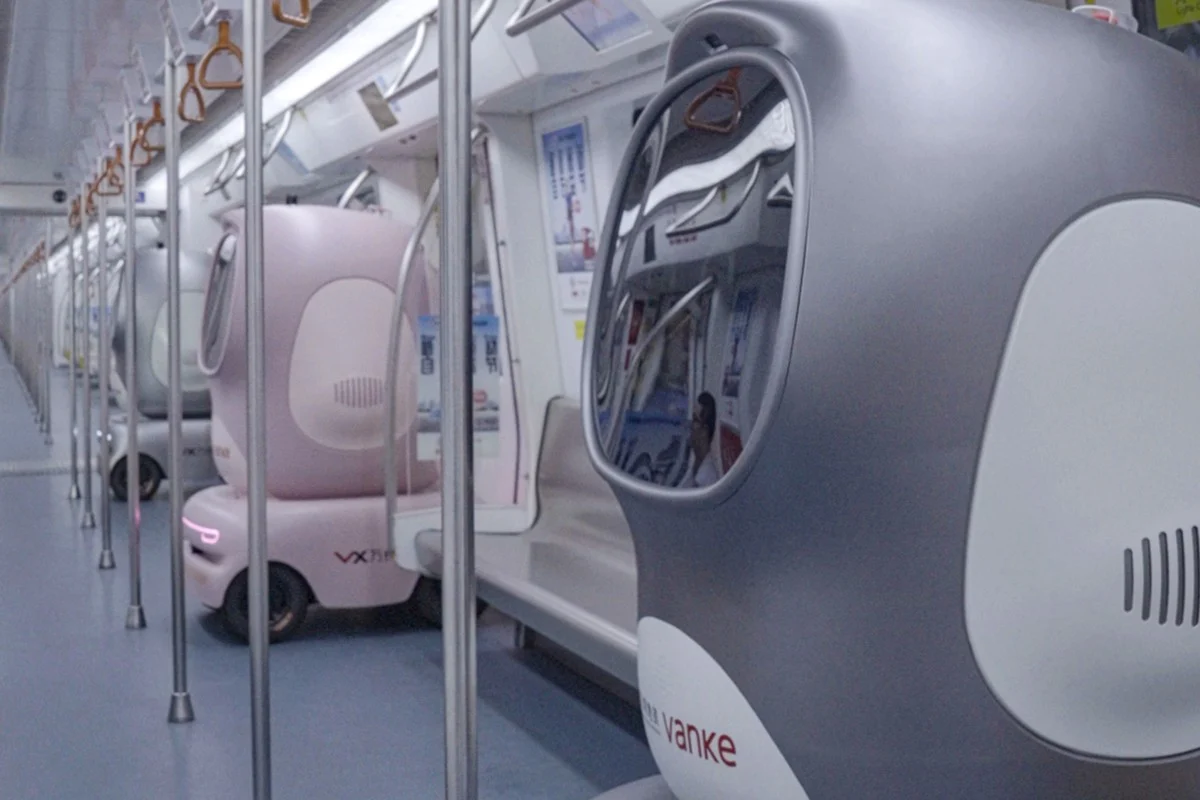Snack Bots on the Subway: Shenzhen’s Delivery Robots Are Rolling In
- Coralie Englebert
- Sep 26
- 2 min read
If you thought your morning commute was crowded, imagine sharing the subway with a fleet of three-foot-tall, snack-carrying robots. Welcome to Shenzhen, China, where autonomous delivery machines are taking public transit for a spin, literally to restock 7-Eleven stores across the city.

Dubbed “subway-riding delivery robots,” this project is reportedly the first of its kind in the world. Earlier this week, 41 chunky, four-wheeled bots boarded active subway trains during off-peak hours, navigated the cars with robotic precision, and delivered goods to convenience stores. The mission? Make deliveries faster, cheaper, and more reliable than traditional ground-based logistics, while tackling traffic and parking headaches.
How Do They Do It?
The robots aren’t just rolling boxes on wheels. They rely on AI-informed logistics algorithms that plan optimal delivery routes, balancing variables like cargo type, subway capacity, and scheduling. Their chassis described as a “skeleton with motor nerves” allows minor adjustments when boarding trains or elevators. Panoramic lidar, similar to the tech in self-driving cars, lets them “see” their environment and avoid obstacles.
Once a bot reaches its stop, it exits the train, rides an elevator (remotely activated), and arrives at the store. There, a human worker unlocks the boxy interior to retrieve the goods in this test, cartons of tea. For a touch of charm, each robot features an LED “face” that lights up with cartoonish eyes and a smile, letting commuters know they’re friendly, not threatening.
Why This Matters
Shenzhen’s subway system is huge more than 300 stations across the megacity, many with convenience stores. Delivering goods above ground is tricky: traffic congestion, limited parking, and rush-hour delays all slow down traditional logistics. These subway-riding robots could revolutionise restocking by bypassing these obstacles entirely.
The initiative is part of Shenzhen’s Embodied Intelligent Robot Action Plan, aiming to accelerate robotics adoption across industries by 2027. More broadly, the Chinese government has been normalising robots in public spaces, from bipedal robots running a “humanoid half marathon” to boxing matches between humanoid machines.
Robots in Public: A Global Challenge
While Shenzhen seems ready for robots on the move, other countries have met the idea with mixed reactions. In the U.S., the NYPD retired its roaming egg-shaped security bot after public backlash. Starship delivery bots at universities have sometimes gotten lost, fallen into ditches, or struggled to cross streets. And who could forget hitchBOT, the hitchhiking robot that was vandalised in Philadelphia?
Robots in public spaces are still learning the social rules of coexistence. Shenzhen’s bots may be charming, clever, and AI-trained, but it will take time for commuters to get comfortable sharing their daily commute with mechanical colleagues.
The Takeaway
Shenzhen’s subway-delivering robots offer a glimpse into the near-future of urban logistics. They promise efficiency, AI-driven planning, and a novel way to get goods where they need to go without fighting traffic. But they also raise bigger questions about human-robot coexistence in crowded public spaces.
For now, keep an eye on your train: you might just spot a smiling, LED-eyed robot rolling past on its way to deliver a carton of tea. The future of commuting and delivery is officially here.







Comments